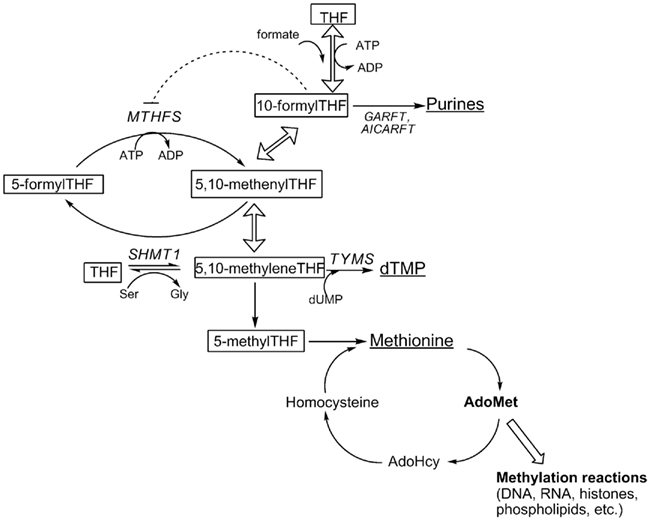Here is the abstract:
The number of diagnosed cases of Autism Spectrum Disorders (ASD) has increased dramatically over the last four decades; however, there is still considerable debate regarding the underlying pathophysiology of ASD. This lack of biological knowledge restricts diagnoses to be made based on behavioral observations and psychometric tools. However, physiological measurements should support these behavioral diagnoses in the future in order to enable earlier and more accurate diagnoses. Stepping towards this goal of incorporating biochemical data into ASD diagnosis, this paper analyzes measurements of metabolite concentrations of the folate-dependent one-carbon metabolism and transulfuration pathways taken from blood samples of 83 participants with ASD and 76 age-matched neurotypical peers. Fisher Discriminant Analysis enables multivariate classification of the participants as on the spectrum or neurotypical which results in 96.1% of all neurotypical participants being correctly identified as such while still correctly identifying 97.6% of the ASD cohort. Furthermore, kernel partial least squares is used to predict adaptive behavior, as measured by the Vineland Adaptive Behavior Composite score, where measurement of five metabolites of the pathways was sufficient to predict the Vineland score with an R2 of 0.45 after cross-validation. This level of accuracy for classification as well as severity prediction far exceeds any other approach in this field and is a strong indicator that the metabolites under consideration are strongly correlated with an ASD diagnosis but also that the statistical analysis used here offers tremendous potential for extracting important information from complex biochemical data sets.
Here is a pictorial summary of folate-dependent one-carbon metabolism:
 |
http://journal.frontiersin.org/article/10.3389/fgene.2011.00036/full |
And here is an illustration of the transsulfuration pathway:
Do you see where the two connect? It's at the part where methionine is converted in steps to homocysteine and then the homocysteine is recycled to methionine. The major homocysteine-to-methionine pathway is via the enzyme methionine synthase (MS).
In 2013, preliminary findings (due to the small study size) were reported that clearly indicated prematurely low levels of methionine synthase mRNA in autistic subjects' brains during their early years. (https://www.ncbi.nlm.nih.gov/pmc/articles/PMC3577685/) I highly recommend viewing the findings as graphically represented (here: https://www.ncbi.nlm.nih.gov/pmc/articles/PMC3577685/figure/pone-0056927-g005/) as they make it clear just how dramatic the difference is during crucial years in child development.
Why is the methionine-homocysteine cycle important in autism? Autism spectrum disorders are pervasive developmental disorders that are characterized by delays in multiple areas of development, and candidate genes for autism seem to constitute an ever-lengthening list. An influential theory currently is that epigenetic mechanisms are involved, particularly DNA methylation (https://www.ncbi.nlm.nih.gov/pmc/articles/PMC3955092/), which ties directly into the s-adenosylmethionine (AdoMet or SAMe) made from methionine (as illustrated above).
If a methionine synthase (MS) transcription deficiency can cause autism via epigenetic mechanisms, that suggests we need to efficiently and vigorously support the activity of whatever MS-associated activity is present. That is where getting the proper forms of folate and cobalamin (B12) comes in. I'll go more into detail on that tomorrow.
**This is one of a series of posts. Here are the links to each entry in the series.**
Introduction
Part 1
Part 2
Part 3
Part 4
Conclusion
 |
| https://www.researchgate.net/figure/261328951_fig2_The-methionine-cycle-and-transsulfuration-pathwayNotes-Glutathione-synthesis-begins |
In 2013, preliminary findings (due to the small study size) were reported that clearly indicated prematurely low levels of methionine synthase mRNA in autistic subjects' brains during their early years. (https://www.ncbi.nlm.nih.gov/pmc/articles/PMC3577685/) I highly recommend viewing the findings as graphically represented (here: https://www.ncbi.nlm.nih.gov/pmc/articles/PMC3577685/figure/pone-0056927-g005/) as they make it clear just how dramatic the difference is during crucial years in child development.
Why is the methionine-homocysteine cycle important in autism? Autism spectrum disorders are pervasive developmental disorders that are characterized by delays in multiple areas of development, and candidate genes for autism seem to constitute an ever-lengthening list. An influential theory currently is that epigenetic mechanisms are involved, particularly DNA methylation (https://www.ncbi.nlm.nih.gov/pmc/articles/PMC3955092/), which ties directly into the s-adenosylmethionine (AdoMet or SAMe) made from methionine (as illustrated above).
If a methionine synthase (MS) transcription deficiency can cause autism via epigenetic mechanisms, that suggests we need to efficiently and vigorously support the activity of whatever MS-associated activity is present. That is where getting the proper forms of folate and cobalamin (B12) comes in. I'll go more into detail on that tomorrow.
**This is one of a series of posts. Here are the links to each entry in the series.**
Introduction
Part 1
Part 2
Part 3
Part 4
Conclusion

No comments:
Post a Comment